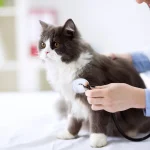Your pet is your family. When they face an emergency, knowing where to go is crucial. Animal hospitals offer life-saving services when minutes matter. In Radford, VA veterinary care is ready to help your pet in critical times. Their team stands by with resources and skills to address sudden illnesses or injuries. Without delay, they assess your pet’s condition. You know your pet deserves immediate attention. Animal hospitals provide various services to stabilize and treat pets quickly. From broken bones to breathing problems, trained staff work tirelessly. They offer surgeries, transfusions, and critical care. Compassionate teams understand how stressful this can be. You find comfort knowing they’re equipped with advanced technology. They also share clear updates, so you remain informed. When every second counts, having expert support makes a difference. Prioritize your pet’s safety by familiarizing yourself with emergency services nearby. Your peace of mind matters, especially during emergencies.
Understanding Emergency Veterinary Services
When an emergency happens, you need swift and effective solutions. Animal hospitals provide several emergency services. Here’s a breakdown of common services your pet can receive:
- 24/7 Monitoring
- Diagnostic Imaging
- Emergency Surgery
- Blood Transfusions
- Oxygen Therapy
Each service targets specific issues, ensuring your pet gets the right care. Knowing these options helps you make informed decisions when every moment matters.
Comparing Services and Benefits
Being aware of what each service provides can aid in understanding the care process. Here’s a comparison table highlighting different emergency services offered:
| Service | Purpose | Benefits |
| 24/7 Monitoring | Continuous observation of your pet’s condition | Immediate response to changes, better recovery chances |
| Diagnostic Imaging | Identify internal injuries or conditions | Accurate diagnosis, targeted treatment plans |
| Emergency Surgery | Address life-threatening injuries or issues | Life-saving intervention, stabilization |
| Blood Transfusions | Restore blood volume and improve oxygen delivery | Support recovery, increase survival odds |
| Oxygen Therapy | Assist pets with breathing difficulties | Stabilize respiratory function, enhance comfort |
Recognizing Signs of an Emergency
Spotting an emergency early can make a huge difference. Be aware of the following signs:
- Difficulty breathing
- Severe bleeding
- Inability to stand or walk
- Unconsciousness
- Seizures
These symptoms need immediate attention. Understanding these signs ensures you can act quickly to get your pet the care they need.
Steps to Take During a Pet Emergency
In an emergency, staying calm can help you make clear decisions. Follow these steps:
- Call the nearest animal hospital for guidance.
- Keep your pet calm and secure during transit.
- Prepare any necessary information about your pet’s medical history.
These actions support a swift response, ensuring your pet receives prompt care.
Resources and Support
If you want to learn more about handling pet emergencies, you can visit the American Veterinary Medical Association for detailed guidelines. Additionally, the ASPCA Animal Poison Control provides useful information in case of poisoning.
Conclusion
Your pet relies on you for protection and care. Recognizing emergencies and knowing how to respond saves lives. By understanding the services available at animal hospitals, you ensure your pet gets critical help during emergencies. Stay informed and act quickly to provide the best care when your pet needs it most.







